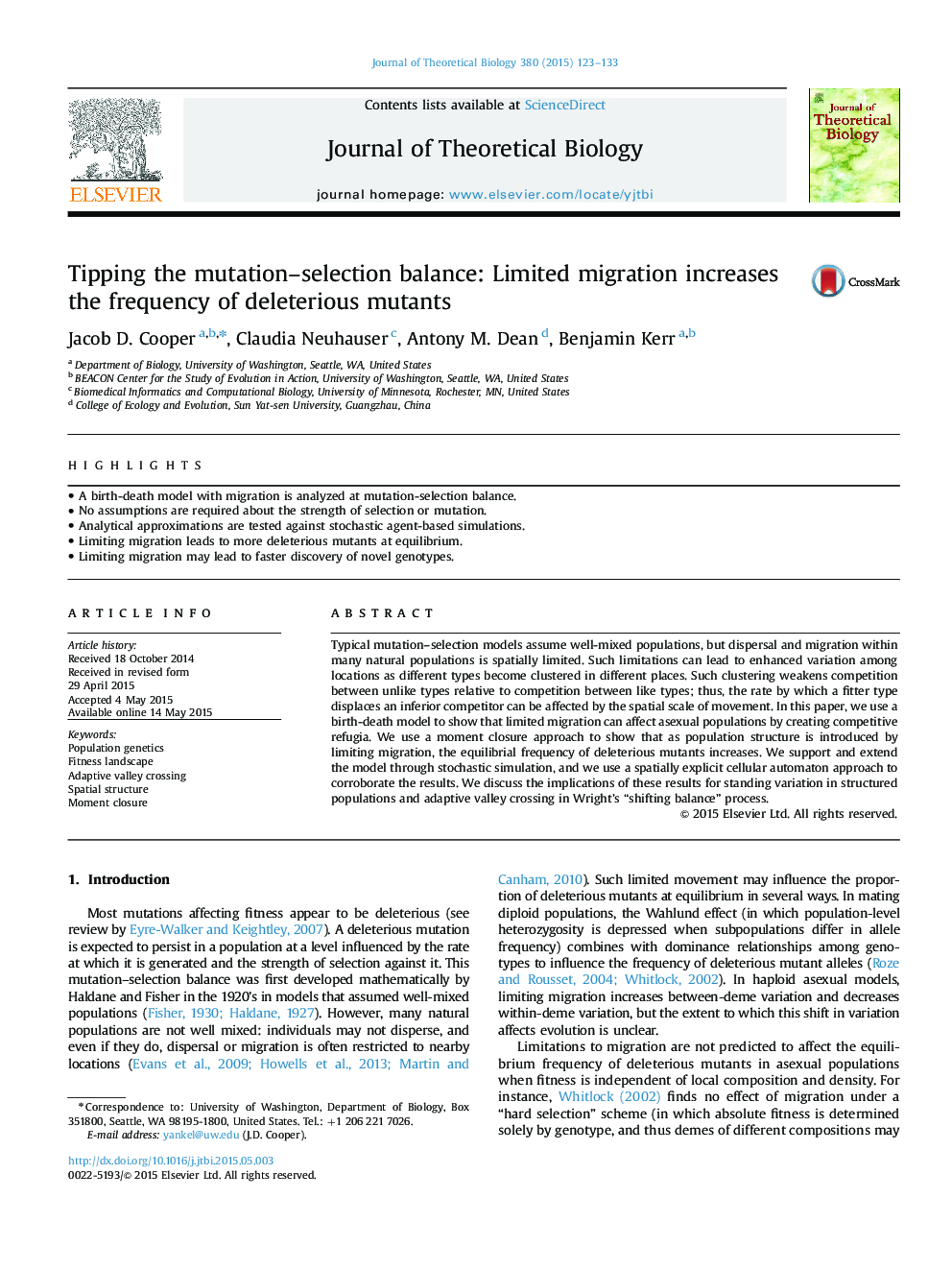| Article ID | Journal | Published Year | Pages | File Type |
|---|---|---|---|---|
| 6369603 | Journal of Theoretical Biology | 2015 | 11 Pages |
Abstract
Typical mutation-selection models assume well-mixed populations, but dispersal and migration within many natural populations is spatially limited. Such limitations can lead to enhanced variation among locations as different types become clustered in different places. Such clustering weakens competition between unlike types relative to competition between like types; thus, the rate by which a fitter type displaces an inferior competitor can be affected by the spatial scale of movement. In this paper, we use a birth-death model to show that limited migration can affect asexual populations by creating competitive refugia. We use a moment closure approach to show that as population structure is introduced by limiting migration, the equilibrial frequency of deleterious mutants increases. We support and extend the model through stochastic simulation, and we use a spatially explicit cellular automaton approach to corroborate the results. We discuss the implications of these results for standing variation in structured populations and adaptive valley crossing in Wright's “shifting balance” process.
Related Topics
Life Sciences
Agricultural and Biological Sciences
Agricultural and Biological Sciences (General)
Authors
Jacob D. Cooper, Claudia Neuhauser, Antony M. Dean, Benjamin Kerr,
